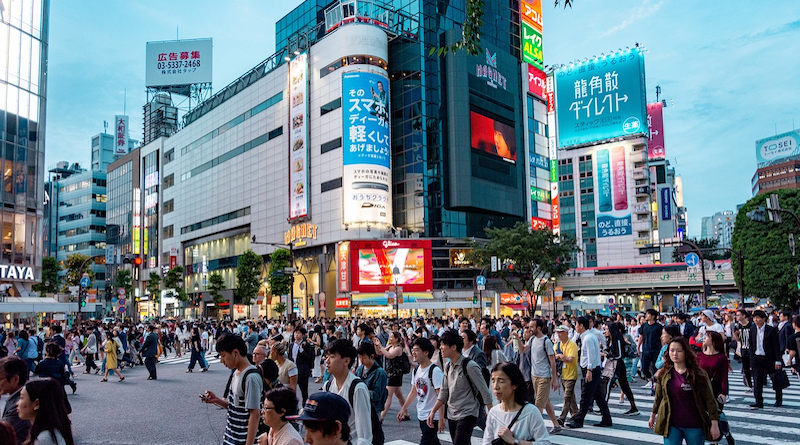Does Japan Dread Or Desire Its Influx Of International Tourists? – Analysis
By Gabriele Vogt and Sian Qin
Kyoto is bracing for another influx of tourists. Next to the rollout of the city administration’s ‘mind your manners’ campaign, Kyoto has terminated its popular one-day bus pass to discourage tourists from using the city’s busses.
Extended queueing times and jammed public transport have inconvenienced locals. In 2022, roughly 80 per cent of residents complained about public transport and the streets being overly filled with tourists. Three quarters expressed concern over tourists’ behaviour, such as littering or eating while walking. The rising number of international travellers strains local infrastructure and public manners have been termed ‘sightseeing pollution’.
Kyoto’s relationship with international tourism is complex. The 52 million visitors to Kyoto in 2018 spent 1.3 trillion yen ($US8.7 billion), generating almost a fifth of the city’s nominal GDP. But the sector triggered a dynamic of ‘tourism gentrification’ with locals being pushed out from the housing market since short-term holiday rentals are more lucrative to landlords. Shops and restaurants started catering to travellers rather than locals.
In February 2020, Shoei Murayama, a long-time member of the Kyoto city assembly, ran his mayoral campaign on the main message that ‘overtourism’ was detrimental to the ancient capital city. Though he did not win the race, his campaign highlighted the debate about mass tourism.
The COVID-19 pandemic fundamentally changed the situation. Japan closed its borders to inbound tourists from April 2020 to October 2022, bringing tourism industry to a complete halt. During the prior seven years, from 2013, when Tokyo was selected as the host city for the 2020 Olympic and Paralympic Games, the number of international visitors to Japan had more than tripled to almost 32 million in 2019.
The transport ministry’s 2003 ‘Visit Japan Campaign’ and the 2006 introduction of the basic law to promote tourism firmly established tourism as a pillar for Japan’s economic development. In 2008, the Japan Tourism Agency was created. Tourism’s political dimension can become salient, such as when visa regulations for wealthy Chinese individual travellers were eased in 2009, or when trips to the Tohoku area were promoted internationally to contribute to economic recovery after the 2011 Great Northeast Japan Earthquake.
In 2019, inbound tourists spent 4.8 trillion yen (US$32.1 billion), exceeding the 4 trillion yen (US$26.8 billion) generated by the export of semiconductors. Japan’s border-closure during the pandemic shifted the tourism industry from an economic stronghold to needing a stimulus package, most notably the ‘Go To Travel’ campaign. This campaign was designed to increase domestic travel and mitigate hotel bankruptcies.
Tourism hot spots still suffered from the absence of international travellers. Half of Kyoto residents claimed that the city’s economic situation deteriorated significantly during the COVID-19 pandemic and hoped for tourism to rebound to pre-pandemic levels.
The number of inbound visitors in September 2023 hit 2.2 million — 96 per cent of pre-pandemic levels. The recent depreciation of the Japanese yen against the US dollar, euro and other currencies has supported this quick rebound. In the second quarter of 2023, the total spending of inbound visitors reached 1.23 trillion yen (US$8.2 billion), nearly matching the 2019 spendings of the same period. The travel spending per inbound visitor now stands at an average of 200,000 yen (US$1338), fulfilling the policy goal set for 2025. This goal was formulated in the latest revision of the basic law to promote tourism, which was approved by the Cabinet in March 2023, and states that Japan is to target more inbound tourism of the wealthy to raise the general consumption level of tourists.
Travelers from the United Kingdom, China and Australia are the biggest spenders. In 2023, Chinese tourists were largely absent from Japan during the Chinese October holiday season, despite the Chinese government lifting the ban on outbound group tourism in August. In response to the Japanese government’s approval of disposing wastewater from the Fukushima nuclear power plants into the Pacific Ocean, travel agencies removed Japan from the list of recommended destinations. Though the Chinese government did not officially discourage international travel to Japan, booked group trips were cancelled in bulk.
In Okinawa, which had equalled Hawai’i in terms of incoming tourists in 2017, the absence of Chinese tourists is apparent. During his trip to China in July 2023, Okinawan Governor Denny Tamaki successfully lobbied for direct flights from Beijing and Shanghai to Naha to be resumed. Still, inbound tourism to Okinawa is only picking up slowly, and in September 2023 stood at 50 per cent of pre-pandemic levels.
Many Okinawans are critical of a potential return of mass tourism. Locals complained about tourists trampling over holy sites. Since incidents like these in Kudaka island were on the rise, Keiichiro Nakamura, the owner of a local travel agency, designed a website educating tourists about appropriate behavior while sightseeing on the island. In a recent interview with the authors, Nakamura explained that the happiness of the locals is a crucial precondition for any successful development of the tourism industry.
Japan is likely to remain a popular tourist destination. The metropolitan areas of Tokyo, Osaka and Kyoto draw two thirds of international travellers, leaving a remarkable gap between urban and rural areas. Rather than a general ‘overtourism’, Japan experiences an overconcentration of tourists in certain areas. Tourists who violate rules and manners trigger incite profound backlash among local society. It is high time for the tourism industry to acknowledge these challenges, and transform into a more inclusive business that balances financial gains and societal support.
About the authors:
- Gabriele Vogt is Chair in Japanese Studies at the Ludwig Maximillian University Munich.
- Sian Qin is PhD Candidate in Japanese Studies at the Ludwig Maximillian University Munich.
Source: This article was published by East Asia Forum

